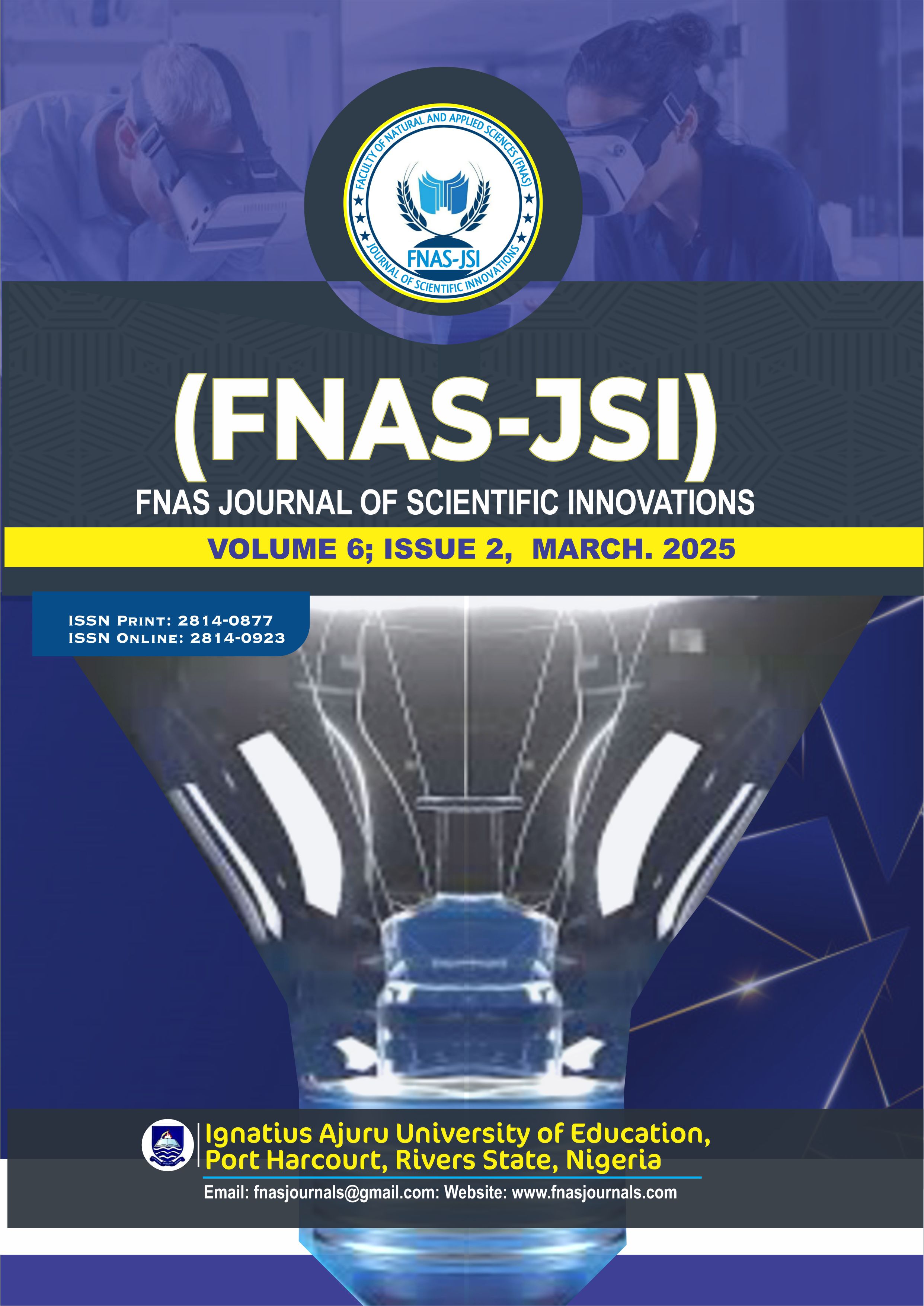Epidemiological Viability and Control of Rotavirus: A Mathematical Modelling Approach
Main Article Content
Abstract
To effectively address rotavirus infections, interventions must be tailored to specific socio-economic contexts and target populations. This study presents a mathematical model to describe the dynamics of rotavirus, emphasizing the importance of a comprehensive approach to combating the infection. Sensitivity analysis reveals the influence of each variable on disease spread and assesses the model's robustness across different parameter values. The model's epidemiological viability is demonstrated by its equilibrium in endemic conditions, stability in disease-free scenarios, non-negativity, and boundedness. Optimal control measures significantly impact virus transmission, with simulations showing that combining diverse strategies effectively reduces the spread of rotavirus. These findings highlight the importance of balanced and adaptable control measures, leading to enhanced immunity, reduced infection rates, and better health outcomes for affected communities.
Article Details
References
Agbomola, J. O., & Loyinmi, A. C. (2022a). A Mathematical model for the dynamical behavior of Ebola virus transmission In Human-Bat population: Implication of immediate discharge of recovered individuals. Preprint. https://doi.org/10.21203/rs.3.rs-1399224/v1
Agbomola, J. O., & Loyinmi, A. C. (2022b). Modelling the impact of some control strategies
on the transmission dynamics of Ebola virus in human-bat population: An optimal control analysis, Heliyon, 8(12), e12121. https://doi.org/10.1016/j.heliyon.2022.e12121 Darti, I., Suryanto, A., & Ilmi, N. B. (2020). Dynamical behavior of a Rotavirus transmission model with an environmental effect. AIP Conference proceedings. 2264 (1). https://doi.org/10.1063/5.0023487
De Blasio BF, Kasymbekova K, Flem E. (2010). Dynamic model of rotavirus transmission and the impact of rotavirus vaccination in Kyrgyzstan, Vaccine, 28 (50), 7923-7932. https://doi.org/10.1016/j.vaccine.2010.09.070
Ernest, O., Asare, Mohammad, A., Al-Mamun, George, E., Armah, Benjamin, A., Lopman,
Umesh, D., Parashar, Fred, Binka, Virginia, E., & Pitzer (2020). Modelling of rotavirus transmission dynamics and impact of vaccination in Ghana. Vaccine, 38(31) 4820-4828. https://doi.org/10.1016/j.vaccine.2020.05.057. Gaalen, V., Rolina, D., Van-de, Kassteele, Hahné, J., Susan, J. M., Bruijning-Verhagen, Wallinga, P., & Jacco. (2017). Determinants of Rotavirus Transmission: A Lag Nonlinear Time Series Analysis, Epidemiology, 28(4), 503-513. https://journals.lww.com/epidem/toc/2017/07000
Gbodogbe, S. O. (2025). Harmonizing epidemic dynamics: A fractional calculus approach
to optimal control strategies for cholera transmission. Scientific African, 27. https://doi.org/10.1016/j.sciaf.2025.e02545 Idowu, O. K., & Loyinmi, A. C. (2023a). Qualitative analysis of the transmission dynamics and optimal Control of Covid-19. EDUCATUM Journal of Science, Mathematics and Technology. 10(1), 54–70. https://doi.org/10.37134/ejsmt.vol10.1.7.2023
Idowu, K. O., & Loyinmi, A. C. (2023b). Impact of Contaminated surfaces on the transmission
dynamics of Corona Virus Disease ( Covid-19 ). Biomedical Journal of Scientific and
Technical Research. 51(1), 42280–42294. https://doi.org/10.26717/BJSTR.2023.51.008046
Ilmi, N. B., Darti, I., & Suryanto, A. (2020). Dynamical Analysis of a Rotavirus infection model
with vaccination and saturation incidence rate. Journal of Physics: Conference Series, 1562(1). IOP Publishing. DOI 10.1088/1742-6596/1562/1/012018 Kraay, A. N. M., Brouwer, A. F., Lin, N., Collender, P. A., Remais, J. V., & Eisenberg, J. N. S. (2018). Modeling environmentally mediated rotavirus transmission: The role of temperature and hydrologic factors, PNAS. 115(12), 2782-2790. https://doi.org/10.1073/pnas.1719579115
Lee, T., Kang, J., Ahn, J. G., Truong, D.T.T., Nguyen, T.V., Vinh, T., Ho, Ton, H.T.T., Hoang, P.L., Kim, M.Y., Yeom, J., & Lee, J. (2024). Prediction of effectiveness of universal rotavirus vaccination in Southwestern Vietnam based on a dynamic mathematical model. Sci Rep 14, 4273. https://doi.org/10.1038/s41598-024-54775-6
Loyinmi, A. C., & Ijaola, A. L. (2024a). Investigating the effects of some controls measures on
the dynamics of diphtheria infection using fractional order model, Mathematics and Computational Sciences, 5(4), 26-47. 10.30511/MCS.2024.2032110.1183.
Loyinmi, A. C., & Ijaola, A. L. (2024b). Fractional order model of dynamical behavior and
qualitative analysis of Anthrax with infected vector and saturation. Int. J of Math. Anal. And Modelling, 7(2), 224-264.
Loyinmi, A. C., Ajala, A. S., & Alani, L. I. (2024). Analysis of the effect of vaccination,
efficient surveillance and treatment on the transmission dynamics of cholera. Al-Bahir journal for Engineering and Pure Sciences, 5(2), 94–107. https://doi.org/10.55810/2313-0083.1070
Loyinmi, A. C., & Gbodogbe, S. O. (2024., Mathematical modeling and control strategies for Nipah virus transmission incorporating Bat – to – pig –to – human pathway. EDUCATUM Journal of Science, Mathematics and Technology, 11(1), 54-80. https://doi.org/10.37134/ejsmt.vol11.1.7.2024
Loyinmi, A. C., Gbodogbe, S. O., & Idowu, K. O. (2023). On the interaction of the human immune system with foreign body: mathematical modelling approach. Kathmandu University Journal of Science, Engineering and Technology. 17(2), 1-17. https://journals.ku.edu.np/kuset/article/view/137
Loyinmi, A. C., Akinfe, T. K., & Ojo, A. A. (2021). Qualitative analysis and dynamical behavior of a Lassa haemorrhagic fever model with exposed rodents and saturated incidence rate. Scientific African, 14, e01028. https://doi.org/10.1016/j.sciaf.2021.e01028.
Lopman, B. A., Pitzer, V. E., Sarkar, R., Gladstone, B., Patel, M., & Glasser, J. (2012). Understanding reduced rotavirus vaccine efficacy in low socio-economic settings PLoS ONE, 7(8), e41720.
Margaret, M., Cortese, M. D.., & Penina Haber, M.P.H. (2021), Rotavirus, https://www.scribd.com/document/639432146/Untitled.
Park, J., Goldstein, J., Haran, M., & Ferrari, M. (2017). An ensemble approach to predicting the impact of vaccination on rotavirus disease in Niger. Vaccine, 35 (43), 5835-584
Pitzer, V. E., Patel, M. M., & Lopman, B. A. (2011). Modeling rotavirus strain dynamics in developed countries to understand the potential impact of vaccination on genotype distributions. PNAS. 108(48), 19353-19359. https://doi.org/10.1073/pnas.1110507108 Pitzer, V. E., Atkins, K. E., De-Blasio, B. F., Van, T., Effelterre, Atchison, C. J., & Harris, J. P.(2012). Direct and indirect effects of rotavirus vaccination: comparing predictions from transmission dynamic models. PLoS ONE, 7 (8), e42320. https://doi.org/10.1371/journal.pone.0042320
Shim, E., & Galvani, A. P. (2009). Impact of transmission dynamics on the cost-effectiveness of rotavirus vaccination, Vaccine, 27 (30), 4025-4030
Sydney, Randall. (2023). How Serious Is Rotavirus? A Look at Worldwide Statistics, https://www.healthline.com/health/rotavirus-season#fa-qs White, L. J., Buttery, J., Cooper, B., Nokes, D. J., & Medley, G. F. (2008). Rotavirus within day care centres in Oxfordshire, UK: characterization of partial immunity. Journal of the Royal Society Interface, 5(29). https://doi.org/10.1098/rsif.2008.0115

